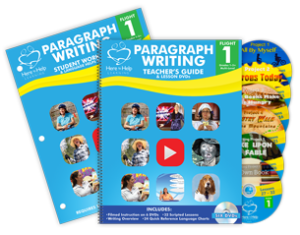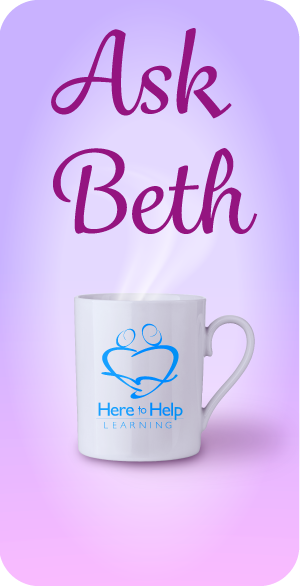Our family has learned summer is the perfect time to sharpen skills and foster a love of learning, but it looks quite a bit different than our September-June style of learning.

The lazy days of summer are here! I love the more relaxed nature of life during the summer. Yes, we made it! Last. Day. Of. School. (deep breath and a long sigh). We put our textbooks and notebooks away. I’ve taken pictures of all the school projects and artwork for each child’s portfolio. (Taking photos of school projects is something I learned to do a little later in my homeschool career. Things happen to school projects in the garage; that’s all I’m saying.) I am ready to put homeschooling out of my mind and devour my stack of books I want to read. Books that are considered my “grade level” and titles that DO NOT contain the word “homeschool”. But as a die-hard curriculum junkie, I ready my Rainbow Resource, and CBD catalogs for the moment I start thinking about our next homeschool school year. My kids who didn’t seem to have a trickle of steam for the last two months of school burst forth with copious amounts of explosive energy for free play. And so begins another summer for the Mora household.
Truth be told, I prefer year-round school. We did it one year. I enjoyed the frequent breaks, and I spent less time reviewing, or what I call, “blowing the dust off the brain”. I liked being able to take time off during the fall or spring. We were able to go on vacation during off-season months. However, once we joined a co-op, the year-round school just didn’t quite fit in between the calendar grid lines. So what worked for us was more of a pseudo-year-round homeschooling philosophy. It became our family’s educational rhythm. And these six summer learning activities became a normal part of the summer season.
1.Summer Learning: New Chores
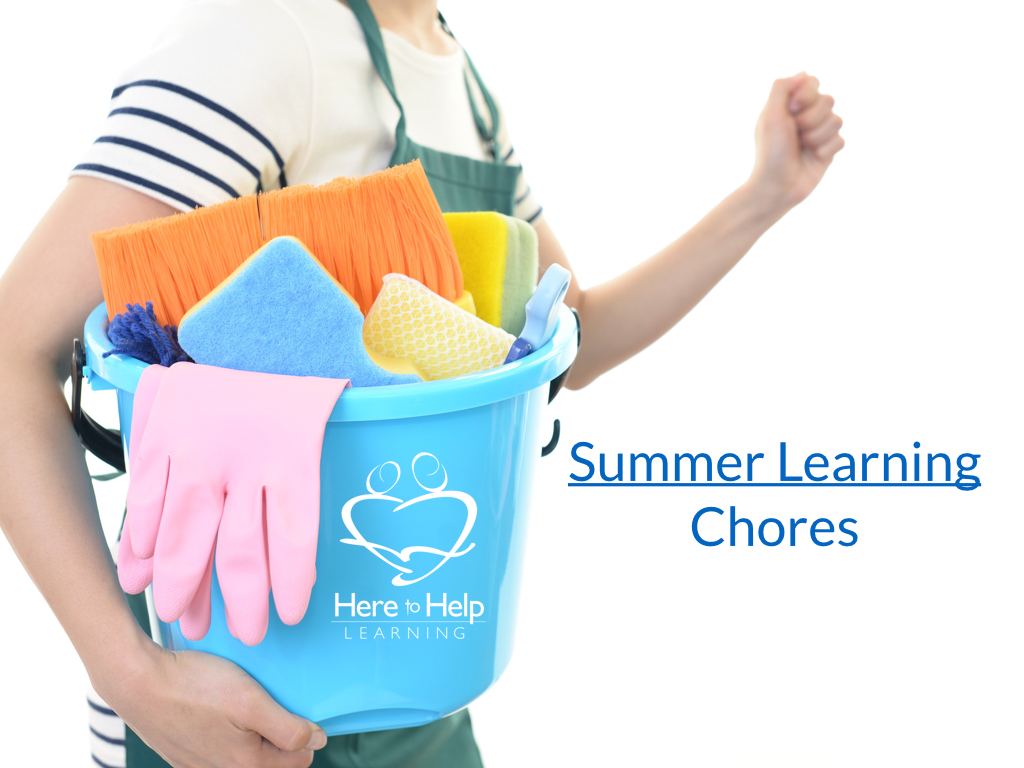
The first day of summer, one question would be on the minds of our children—what is my new chore for the year? I know. It’s a strange question for the first day of summer.
Backstory: Long time ago, I did away with the weekly chore chart. You know, the one where depending on the day, a different child would do a different task. Well, I had two major problems this style. One of my issues was that this form of chore chart assumed I knew which day it was. With a plethora of children comes occasional disorientation to person, place, or time. I often failed the pop quiz, “What is the day of the week?” In business, this is called a “leadership limitation”.
The second issue I had was I needed REAL help around the house. A full-time maid was not in the budget, and I didn’t have time during the school year to train and oversee an eight-year-old boy on latrine duty. However, in the summertime, I had ample time to teach my children how to execute a particular chore. My Summer Bathroom Cleaning Unit Study was riveting. Ask my kids. It gave me the time to communicate and demonstrate the fine art of cleaning the common toilet with all its architectural challenges. The Venn diagram comparing and contrasting Mom vs. seven-year-old daughter’s idea of clean, in my humble opinion, was brilliant.
By the end of summer, I could count on my children for the rest of the year to clean the bathroom or do other common household chores. So we kicked off our summer with the life-changing announcement of the yearly assigned chore. Let summer begin!
2.Summer Learning: Math Facts

Twenty years ago one of my dear friends, a veteran homeschool mama, told me, don’t let your children start Algebra until they know their math facts like lightning. I listened. I drilled my kids. I flipped flashcards daily. I flipped, and I flipped, and I flipped until the next day when I flipped and flipped again. I questioned my math fact flipping attitude, wondering if I was following sound advice.
In the end, she was right, 100% right. I understand, it is important for a student to know the concepts of grouping and regrouping, such as- 7+5=(5+5 plus 2) =12. But, it is equally important for a student to see 7+5 and know the answer 12 automatically. As I said, we worked hard during the school year to make gains in mastering math facts, and I didn’t want to lose ground. So daily summer math facts became a part of our routine.
Free math worksheet resource: Dad Worksheets.com
3.Summer Learning: Root Words
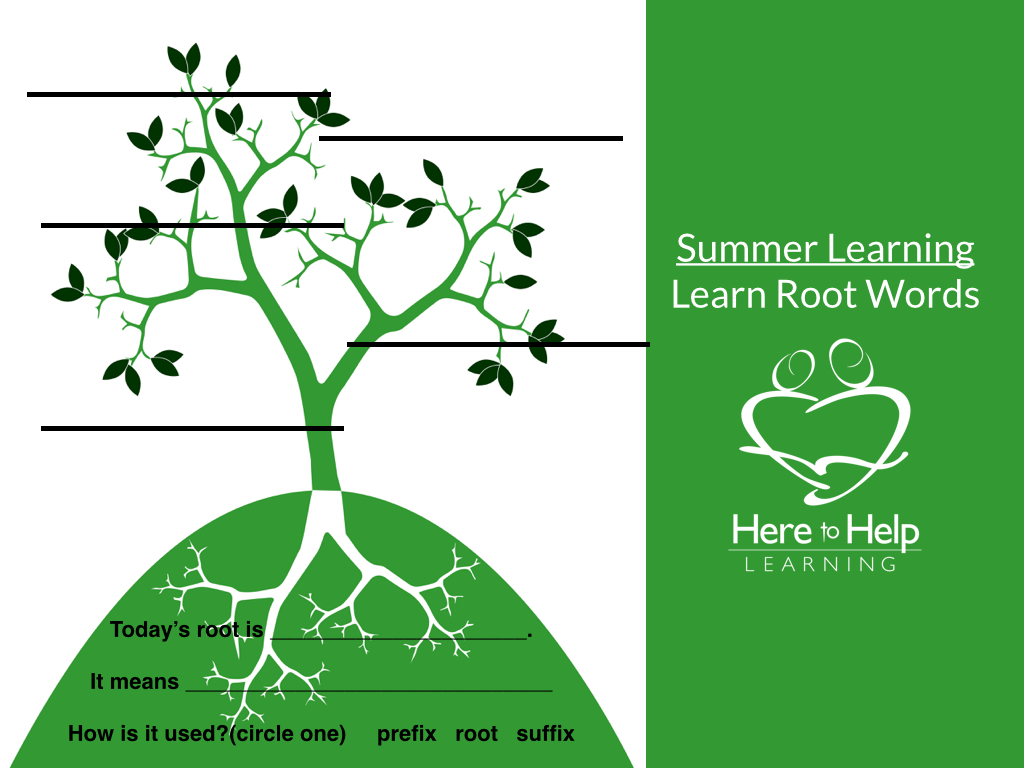
Over the years, I also learned that a quick way to increase a student’s vocabulary is to teach them root words. Those little Latin and Greek words sneak into our English language and leave wonderful tiny clues pointing to the meaning of multi-syllable words. I arm my student with a knowledge of root words and the definitions of new words easily unfold into a greater understanding of the word. We would memorize root words in batches of 5-10 words, depending on the child’s age.
Here is a comprehensive list of root words.
4.Summer Learning: Reading for Enjoyment
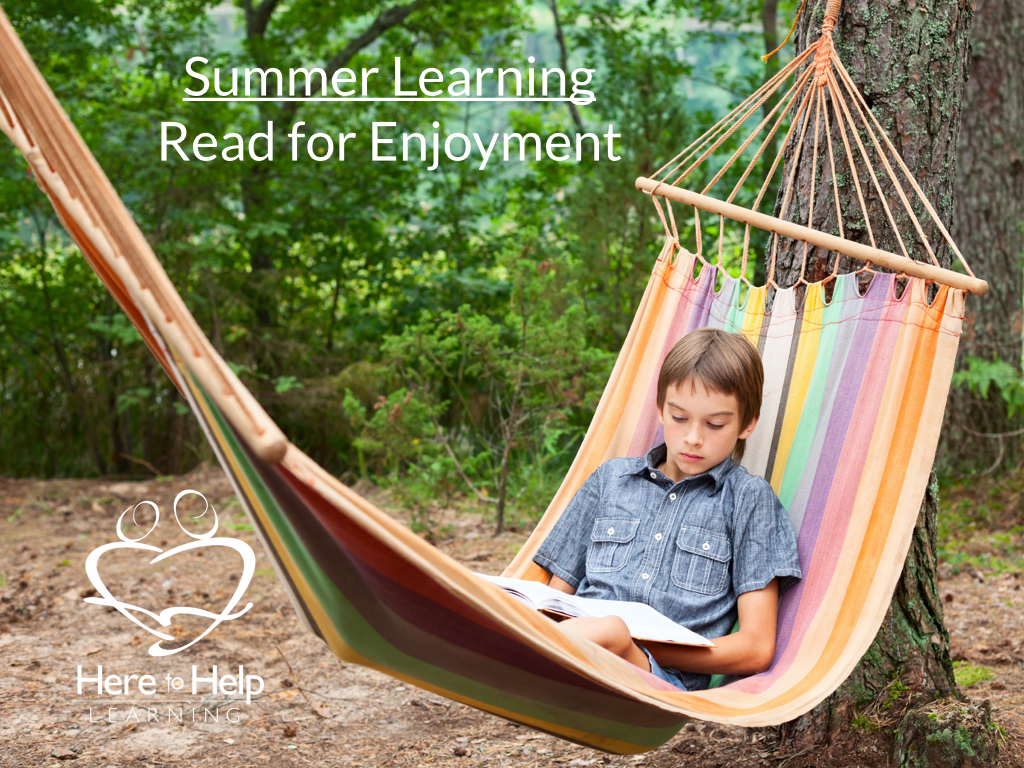
In an earlier Home to Home post, “Good Things Come in Packages of three-Even Reading Skills“, I outline the importance of reading for enjoyment. Unrushed time is a crucial factor in cultivating reading for pleasure. And there is no better chunk of unrushed time than in the summer. When my kiddos were young, we lived in rural Northern California and by 2:00 pm, the temperature feels like we are two small inches from the devil’s place of residence. Our children would wander inside the house with red flushed cheeks and flop on our couch or sit close to the air-conditioned vent. Rather than turn on the TV or stream a movie, 2-3 pm became summer reading time.
We stocked up on books from the library, and we made good use of our local library’s summer reading program.
Check out these printable reading records!
5. Summer Learning: Build a Job Resume
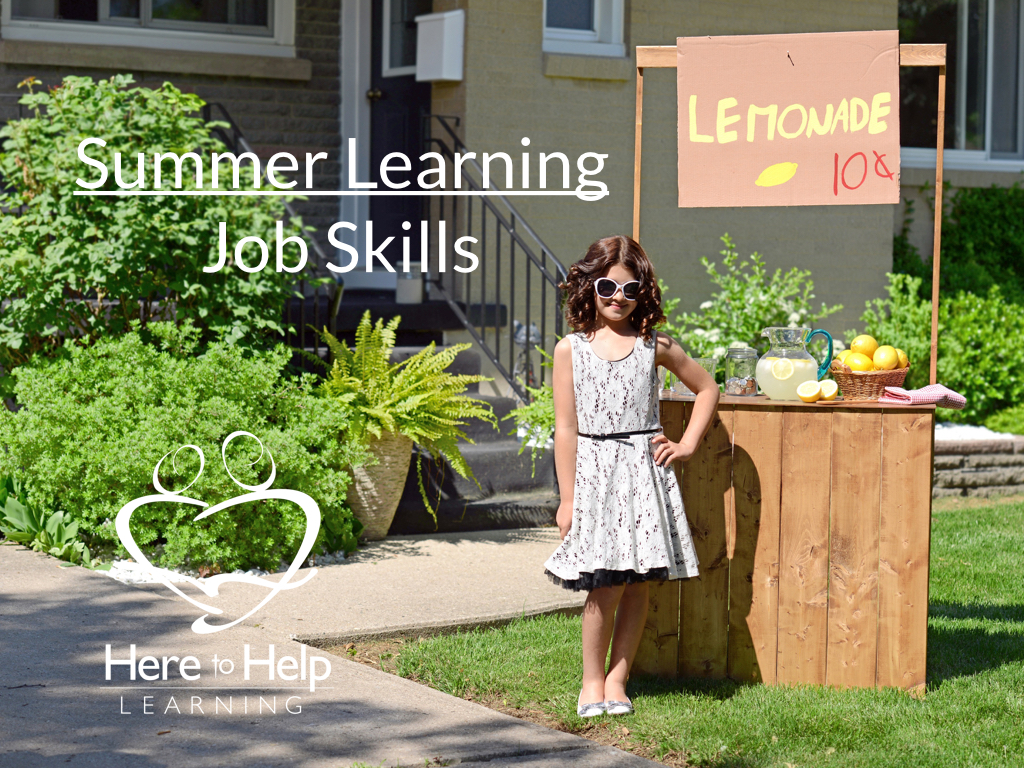
Things have changed since I was a kid. At age 12, every weekend, I traveled with a family to their summer home and babysat their nine-year-old. I had a full-time, 40 hour a week summer babysitting job at age 13-14. I became a pre-school assistant by age 15, and a convalescent hospital dinner attendant by age 16. By age 17, I became a Certified Nurse’s Aide and worked at a convalescent hospital for two years. And from age 18 until I graduated college, I worked at a regional community hospital. My resume looked pretty good for a young adult. With increasing regulations, there seem to be fewer opportunities for young ones to gain experience. My husband and I had to get creative with our kids in helping them gain job experience. As early as nine years old, our kids had to keep a job resume and add to it every year. Summer was a perfect time to add to their resume. Initially, they gained experience through volunteer opportunities. They helped the church nursery during the off hours by cleaning and organizing. They worked at our church’s kid’s camp and helped prepare the gazillion games and crafts that make camp so much fun. The leaders always welcomed an extra helping hand. Our kids assisted our local librarian by setting up craft supplies for the summer reading program. They volunteered at food and clothing giveaways restocking shelves or cleaning. We taught our kids to treat their volunteer opportunities just like a job, and we spent a lot of time chatting about what that meant. At the end of their volunteer time, they would ask for a letter of recommendation and place it in their job folder. When they reached the age of about 13-14, each child took a turn managing our little roadside farm stand. Eventually, some of our kids opened businesses such as “College Bound Gardening” or “Housekeeping by Serena”. By age 16, some of our kids worked at local retail shops or restaurants. Each year they added to their resume. Summer learning included gaining invaluable job skills.
Here is a resume template to help your kids get started.
6.Summer Learning: Sneaky Little Learning Traps
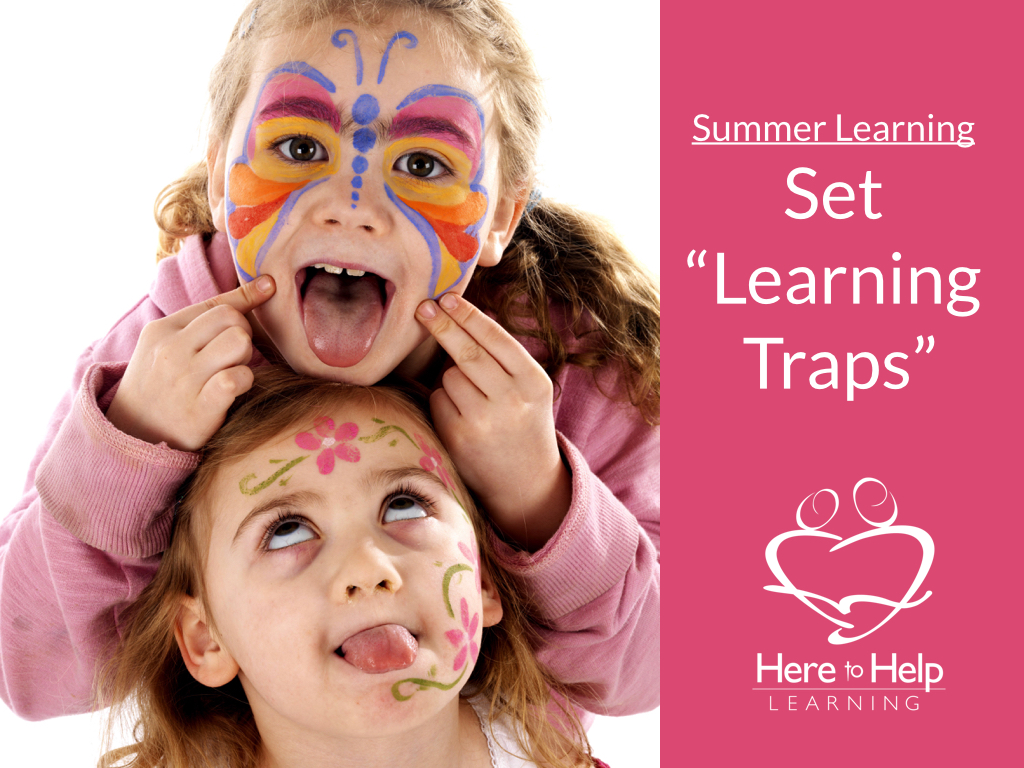
I inspire summer learning with my Sneaky Little Learning Traps. Here is what I do. At the library, I load up on books about science, art, cooking, or any other fun activities. I bait my learning trap with a book on, let’s say, face painting. I add supplies to complete the activity such as paints, brushes, and a mirror. I patiently watch and wait. The unsuspecting youngster wanders in with “nothing to do”. I continue to do whatever it is I’m doing and resolve not to make eye contact with said child. The child utters a deep sigh and glances at me to see if I notice. I remain firm. The unwary child says with a touch of drama, “I’m bored!” Without missing my cue, I reply in my lovely mom voice, “I have some chores you can do.” (My children know very well of my spiritual gift that empowers me to think of a chore on the fly.) So in flight or flight mode, the child looks and sees the book and supplies. Without a word, the child is learning about face painting.
I feel my job as a home educator, even in summer, is to serve up great thoughts and ideas, and my learning traps helped my young ones gobble up the educational feast I set before them.

Our summers are dotted with family vacations, church camps, trips to the river or lake, and lots of fort building and free-to-roam playtime. But they also included the habit of learning new things and growing in new skills. I love our summer memories with both amble time to enjoy summer and cultivate a love of learning.
From Our Home to Yours,
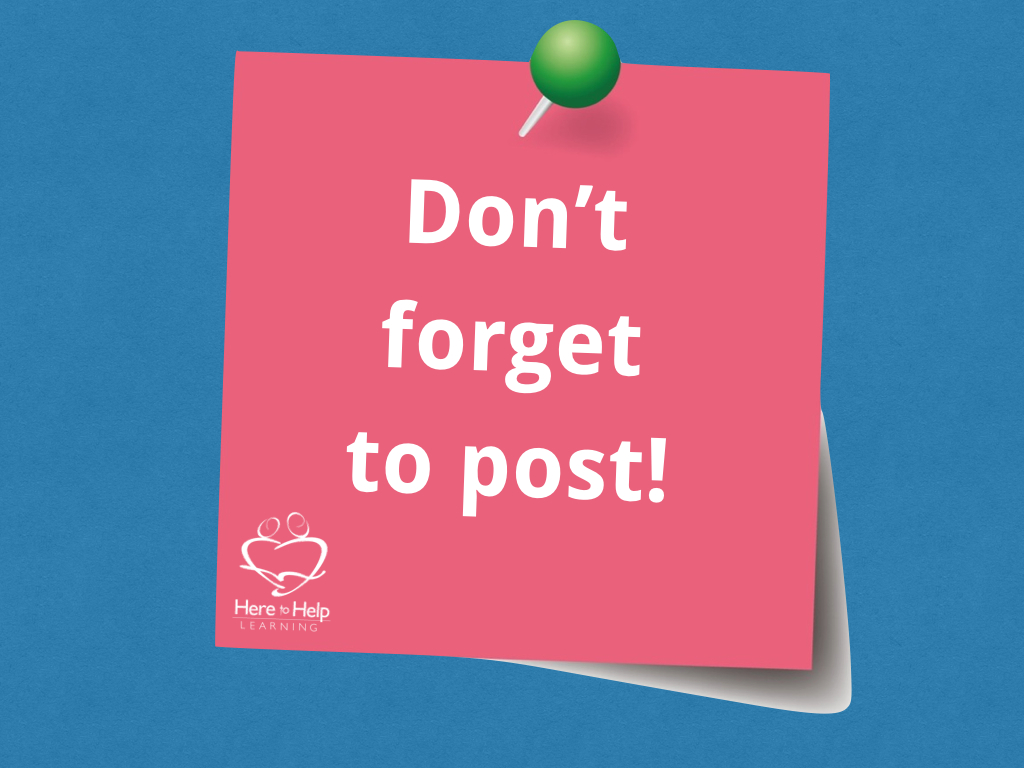 Thanks for letting me share our summer learning adventures! Tell me about your family’s style of summer learning.
Thanks for letting me share our summer learning adventures! Tell me about your family’s style of summer learning.







